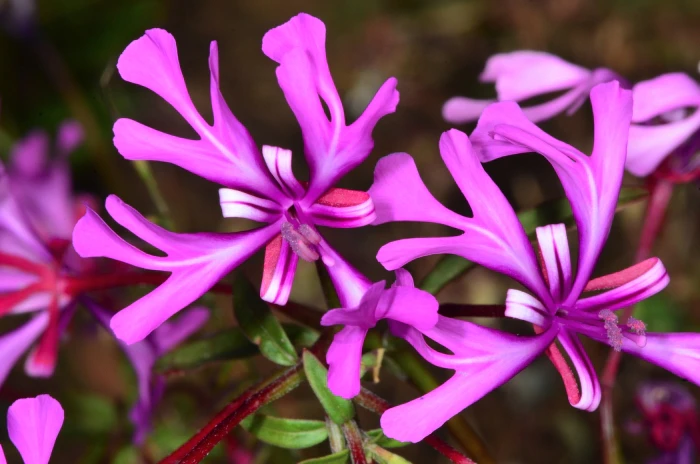Red Ribbons
(Clarkia concinna)
Red Ribbons (Clarkia concinna)
/
/

Don Loarie
CC BY 4.0
Image By:
Don Loarie
Recorded By:
Copyright:
CC BY 4.0
Copyright Notice:
Photo by: Don Loarie | License Type: CC BY 4.0 | License URL: http://creativecommons.org/licenses/by/4.0/ | Rights Holder: Don Loarie | Publisher: iNaturalist | Date Created: 2016-05-01T09:19:05-07:00 |





















































Estimated Native Range
Climate Requirements for New City, New York
| This Plant | Your Site | Plant Suitability for Your Location | ||
|---|---|---|---|---|
| • Precipitation | 15" - 67" | 48" | Aquatic | Aquatic |
| • High Temp. | 68°F - 100°F | 86°F | Your summer temperatures are normal for this plant. | Excellent |
| • Low Temp. | 18°F - 43°F | 20°F | Your winter temperatures are normal for this plant | Excellent |
This plant may not grow well at your location - your precipitation is too high.
Summary
Clarkia concinna, commonly known as Red Ribbons, is an annual herb endemic to California, specifically found in chaparral, coastal sage scrub, and open woodlands in the low-elevation mountains of the northern part of the state. It typically grows to a height of 0.9-2 feet (0.3-0.6 meters) and a width of 1 foot (0.3 meters). The plant has a delicate appearance, with slender stems and lance-shaped leaves. Its most striking feature is the distinctive flowers that bloom in the spring and summer, showcasing four looping sepals of red or dark pink, resembling loops of silk ribbon, and longer, pink petals with three lobes often streaked with white, making the flowers quite showy.
Red Ribbons is valued for its ornamental flowers, which add a splash of color to wildflower gardens, borders, and naturalized areas. It is also used in restoration projects due to its native status and ability to attract pollinators. In cultivation, Clarkia concinna thrives in part shade, requiring low amounts of water, and prefers well-drained soils. It is relatively easy to maintain, making it suitable for xeriscaping. While it is not commonly affected by diseases, it can be susceptible to powdery mildew in humid conditions.CC BY-SA 4.0
Red Ribbons is valued for its ornamental flowers, which add a splash of color to wildflower gardens, borders, and naturalized areas. It is also used in restoration projects due to its native status and ability to attract pollinators. In cultivation, Clarkia concinna thrives in part shade, requiring low amounts of water, and prefers well-drained soils. It is relatively easy to maintain, making it suitable for xeriscaping. While it is not commonly affected by diseases, it can be susceptible to powdery mildew in humid conditions.CC BY-SA 4.0
Plant Description
- Plant Type: Herb
- Height: 0.9-1.6 feet
- Width: 0.563-1 feet
- Growth Rate: Rapid
- Flower Color: Pink, White
- Flowering Season: Spring, Summer
- Leaf Retention:
Growth Requirements
- Sun: Part Shade
- Water: Low
- Drainage: Medium, Fast
Common Uses
Bee Garden, Bird Garden, Butterfly Garden, Deer Resistant, Drought Tolerant, Hummingbird Garden, Low Maintenance, Showy Flowers
Natural Habitat
Chaparral, coastal sage scrub, and open woodlands in the low-elevation mountains of northern California
Other Names
Common Names:
Scientific Names: Clarkia concinna, Eucharidium grandiflorum, Clarkia grandiflora
GBIF Accepted Name: Clarkia concinna (Fisch. & C.A.Mey.) Greene